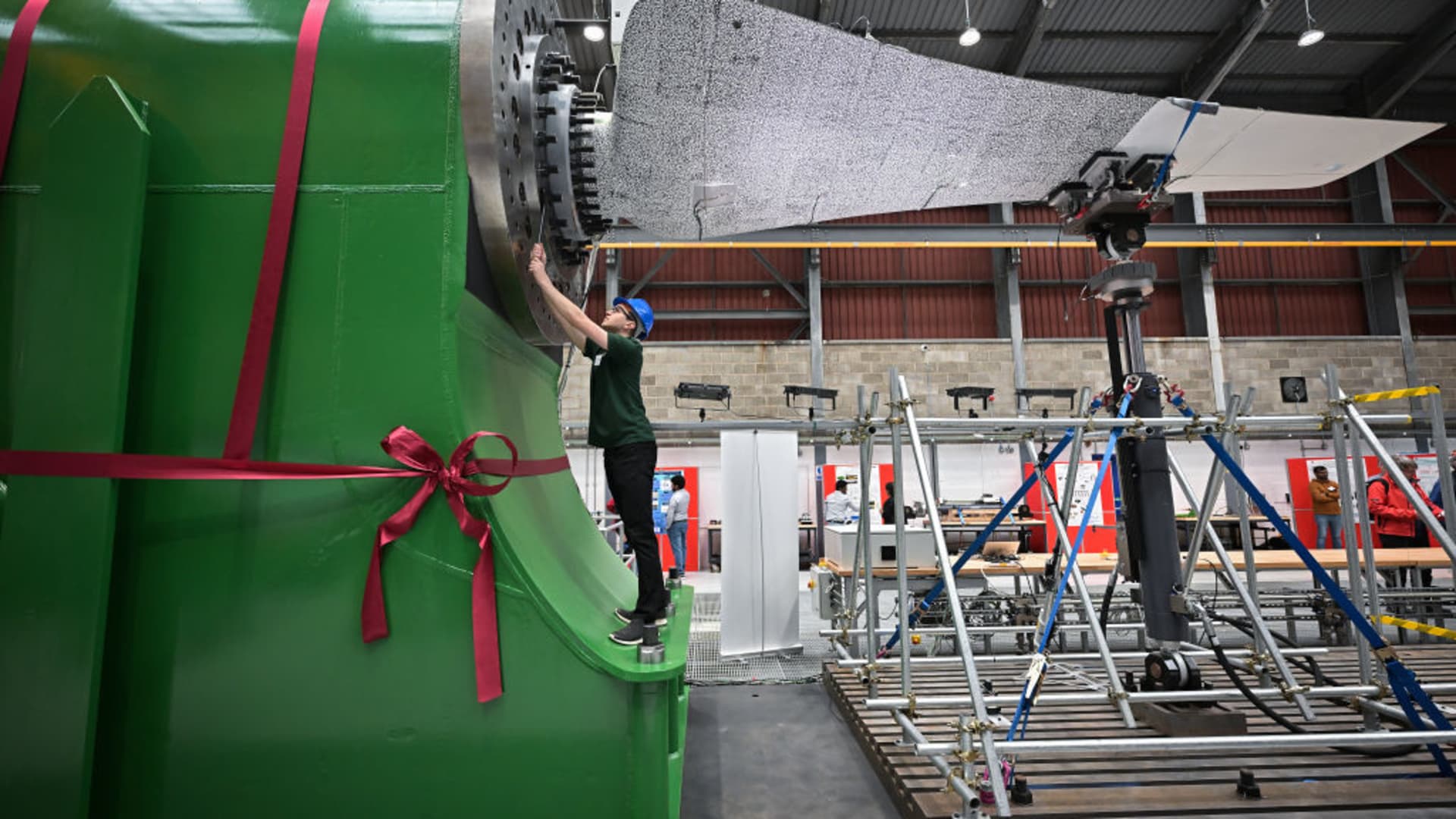Jeff J Mitchell | Getty Images News | Getty Images
In an announcement on the finish of final week, the University of Edinburgh stated the positioning was the “world’s first fast testing facility for tidal turbine blades.”
It added that the FastBlade facility would use a 75 metric ton response body that was ready to apply “highly effective forces on turbine blades greater than 50 ft lengthy.”
FastBlade is a partnership between aerospace agency Babcock International and the college that is backed by a grant of £1.8 million from the U.Okay. authorities. The testing heart is positioned within the city of Rosyth.
Tests on blades, the college stated, could be undertaken “utilizing a system of highly effective hydraulic cylinders, which, in lower than three months, can simulate the stresses positioned on the constructions throughout two decades at sea.”
Conchúr Ó Brádaigh, who is head of the college’s faculty of engineering, stated FastBlade could be “the world’s first devoted fatigue take a look at facility for tidal turbine blades.”
He went on to state it will additionally “assist preserve the globally main place of Scottish tidal turbine builders within the race to discover sources of clear and safe power.”
The University of Edinburgh stated the FastBlade expertise is also harnessed to take a look at wing elements for plane and light-weight bridge sections.
These companies embody tidal energy firm Nova Innovation and Orbital Marine Power, which is engaged on what it says is the “most powerful tidal turbine in the world.”
In waters north of the Scottish mainland, the archipelago of Orkney is dwelling to the European Marine Energy Centre, or EMEC, the place wave and tidal energy developers can test and assess their tech in the open sea.
European installations of tidal and wave energy capacity jumped in 2021, because the ocean vitality sector noticed deployments revert to pre-pandemic ranges and a considerable improve in funding.
In March, Ocean Energy Europe stated 2.2 megawatts of tidal stream capability was put in in Europe final yr, in contrast to simply 260 kilowatts in 2020. For wave vitality, 681 kW was put in, which OEE stated was a threefold improve.
Globally, 1.38 MW of wave vitality got here on-line in 2021, whereas 3.12 MW of tidal stream capability was put in. Capacity refers to the utmost quantity of electrical energy installations can produce, not what they’re essentially producing.
While there is pleasure concerning the potential of marine vitality, the footprint of tidal stream and wave tasks stays very small in contrast to different renewables.
In 2021 alone, Europe put in 17.4 gigawatts of wind power capability, according to figures from industry body WindEurope.

